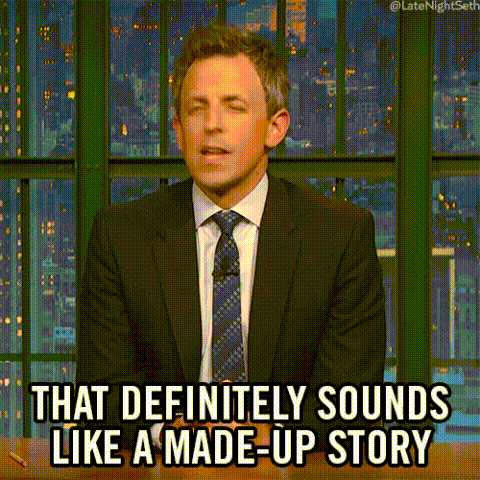
Fake news – the ever-present term that has been causing a ruckus in every aspect of today’s society, is one of the main concerns in the business industry – particularly those in digital marketing.
With the proliferation of powerful online channels such as social media also comes those that intend to use these platforms not only to push their own beliefs and agenda but also to spread lies and misconceptions in order to influence the public’s perception and destroy the reputation of the brands they are competing against.
Read on as we discuss in this post what fake news are all about, what causes its proliferation, how it can detrimentally affect the businesses utilizing digital marketing these days, and what brands can do to stay “genuine” in this age of misinformation.
5 Types of Fake News
According to advertising giant Ogilvy, there are five categories of fake news, some of which are actually fake, while others are due to human error and biases. Regardless, all these types can lead to conflict and deception – forever changing the perception of the public towards the government, businesses, social groups, key individuals, and other key elements of the social fabric.
- Satire or Parody
Fake news published by satire websites such as The Onion and Daily Mash in an attempt to amuse the public. While not intended to mislead the public, gullible people tend to misinterpret these news and share them as truth to their own network.
- Misleading News Used in the Wrong Context
Fake news that includes chosen facts to gain headlines in order to skew the public perception on the overall picture or conclusion of the research or report.
- Sloppy Reporting to Achieve a Certain Agenda
News that contains some grains of truth that are not fully verified, which are used to support a certain position or view.
- Misleading News Based on Popular Narrative Not on Facts
News where there is no established baseline for truth, often where ideologies or opinions clash, and unconscious biases come into play. Examples include conspiracy theories about a particular people, event, or topic.
- Intentionally Deceptive
Fake news that is intended to draw a lot of interest to earn profits from clicks or cause confusion or discontent among the audience. This type of fake news is often posted on fake news sites or websites that are designed to look like a real news outlet, and often use videos and images that have been manipulated to look as if they are real.

Social Media: a Fertile Ground for Fake News
Of all the digital platforms there is, social media is considered by many experts as the perfect ground for fake news. With billions of active users worldwide, there is no doubt that the social media space is the ideal platform where fake news can thrive and be consumed by many.
In fact, a study conducted by Statista found that 42% of the fake news in 2017 was generated and distributed through social media in the United States. This is alarming because according to a study by Pew Research, 67% of Americans say they get at least some of their news on social media – with two out of ten people doing so often.
While it is now easier to do a fact-check of all the content being published and shared on social media, the structure of the platforms itself inspires the users the opposite. In fact, a recent study from Columbia University found that people are less likely to fact-check statements when they feel that they are evaluating them in the presence of others (social network) compared with when they are evaluating them alone.
One explanation for this induced vigilance towards questionable claims can be attributed to what is called “safety in numbers” mentality. Apparently, a person is more likely to believe fake news if it has been widely read and shared especially by their friends and colleagues – implicitly believing that it has been verified somewhere along the line already.
Fake news has been a big problem for many social media networks, especially for Facebook. After strong pressure from both the government and the public, Mark Zuckerberg decided early this year to update the News Feed algorithm, which now sorts out fake news by asking users to answer quality surveys.
In July 2018, Zuckerberg also announced that they had armed the platform with security mechanisms such as artificial intelligence capabilities that removed thousands of fake accounts that were used to influence voters in several countries, as well as features that will allow users to see the identity and location of advertisers on Facebook and when specific pages were created and renamed.
But despite these initiatives, we can expect that social media will continue to be the top source of fake news in the online space for the years to come – or not, but only until the users are educated on how to separate facts from fiction and stop using the share count and total number of likes as the basis for the validity of every content they consume on the internet.

How Fake News Can Hurt Your Digital Marketing Campaigns?
In digital marketing standpoint, fake news can have a significant impact on the performance of every campaign you run – from SEO and content marketing to social media and paid search ads.
If you are running a PPC campaign, for instance, your ads may end up on ad-heavy fake news websites that feature content that is either misleading or does not elicit genuine engagement from the users. In fact, JP Morgan recently conducted a manual audit of the 400,00 websites where their ads were running on. After the audit, they found that all but 5,000 websites were providing them with little to no returns on their campaign.
Fake news can also affect your search visibility and rankings. According to Google’s Quality Guidelines on links, “behavior that manipulates links to your site or outgoing links from your site” in order to “manipulate search results” will be penalized. This means that by linking or being linked to a fake content can lead your website being penalized by Google.
Lastly, if you are using digital marketing to build your online brand image, then being a victim of fake news can severely impact your reputation. If a fake news story is published about your brand, and then shared all over the main social media platform you are utilizing, there is a good chance that it will be shared on other sites as well – increasing its reach and thus making the story appear to be true.
Many brands have fallen victim to fake news, and because it is often difficult to track down the original source of the story, their reputation has been tainted already before they were able to mount their response and have the fake news removed on the internet.

Tips to Protect Your Brand Against Fake News
In order to protect your brand and ensure you are following the rules and regulations of various digital platforms when it comes to fake news, there are several steps that you can implement:
- Fact Check All Your Content
It’s clear by now that all types of fake news can cause people to have a skewed belief about a certain individual, group, topic, or interest. To avoid such, it is important that all content you produce – from blog posts to social media posts – are only based on pure facts. Make sure to fact check everything you publish and that you only use reliable sources to back up your claims.
- Use Disavowal Tool and Remove Harmful Links
Bad links can be created in many ways – competitors can use them to try and increase their rankings, users might accidentally link your website in “unsavory” networks, or Google’s algorithm might update in a way that breaks working links.
Google’s link disavowal tool allows website publishers to discount the value of bad links from external sites, helping to prevent against link-based penalties. The main reason why you should use this is to protect your site from bad links that could harm your search ranking and remove any potentially harmful links that may expose your readership to misleading information.
- Audit Your Social Network
Aside from social media content that you post and share, you should also audit your affiliate partners that promote your brand on their own network. Make sure that they are representing your brand, products, and services as they should be, and disclose any partnership that you have with influencers to your customers clearly in order to ensure compliance with disclosure regulations in the market.
- Associate Only With Credible Partners and Networks
It can be very tempting to partner with an affiliate or influencer with a huge following, but the risk could outweigh the opportunities if they fail to represent your brand truthfully to your target audience. Moreover, partnering with less-than-credible partners or influencers can make your trustworthy and reliable partners leave your brand – it is just not worth the risk.
The fake news epidemic isn’t just a call for consciousness on behalf of online users or a demand for digital platforms to implement more effective solutions in place. As one of the major contributor of content in the online space, it is also the responsibility of digital marketers to ensure that they are only working with the most credible networks, and more importantly, ensure that they are telling nothing but only the truth to their audience.
Jomer B. Gregorio is a well-rounded expert when it comes digital marketing. Jomer is also known as a semantic SEO evangelist and practitioner. Check out our Digital Marketing Services today and let us help you in achieving positive and profitable results for your business.
